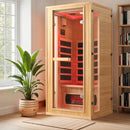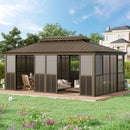How Do Greenhouses Work
Greenhouse technology is increasingly becoming popular in the agricultural industry. Greenhouses are ideal for growing both cash and domestic crops in regions with poor climate and harsh environmental conditions like strong winds. A greenhouse will significantly increase a plant's growth, flowering, and fruit production to guarantee a bountiful harvest. Greenhouse technology could be the perfect solution to more than 68% of families grappling with food insecurity. Even so, a good harvest largely depends on appropriate greenhouse kits. You should also have the right knowledge about how greenhouses work. Here is everything you need to know.
Trapping Heat and Light
Any green plant requires sufficient light energy and warm temperatures to thrive. Other survival needs include water and nutrients. A well-set greenhouse works by trapping heat and light energies for photosynthesis. That is why all greenhouses have either translucent plastics or glass-like walls for maximum light and energy penetration.
Once the heat goes past the translucent material, its wavelength changes. This makes it difficult to escape using its original path. Some greenhouse kits that can help ensure maximum absorption of this energy include black tiles and pavements. From simple science, the darker the object's surface, the more heat energy it likely absorbs.
Warming the Greenhouse
Can you describe the feeling of getting into a car that stayed on a sunny parking lot for endless hours? That is the same feeling you'll experience if you walk into a greenhouse in the middle of the day. Greenhouse construction is air-tight to ensure the trapped warm air raises the entire structure's temperature.
Keeping the Greenhouse Warm
Keeping the greenhouse warm doesn't cost a lot. The catch is in getting a perfect greenhouse location with reliable sunlight. Driving excess warmth out of the greenhouse is easier compared to raising temperatures on a cloudy day. Suppose the temperatures are overwhelming, you can always leverage other greenhouse kits like ventilators. Otherwise, the plants will cook up.
Enhancing Photosynthesis
On average, plants should access heat energy for at least six hours a day to carry out the complete photosynthesis process. Photosynthesis is when green plants use light energy in the presence of carbon dioxide to make food. That is why you should have your greenhouse mounted in an open area to expose it to as much sunlight as possible.
What to Do When There Is No Sun
During the night, trapped energy can easily escape back into the outside atmosphere. It doesn't pose a challenge during the day because incoming light energy travels faster than the heat energy escaping. To save the plant from the danger of lower night temperature, you can do two things. You can either use an artificial heat source or store excess daytime heat. For heat storage, you need high-density materials like bricks, stone, or water. Greenhouse kits that can guarantee reliable heat sources at night include space heaters.
Meet Your Plants' Needs
Greenhouses are an ideal option to ensure that your best crops don't starve. They protect plants from other environmental predators like farm animals and parasitic insects. It is essential to note that greenhouse plants need more care than open-field plants. There is a high likelihood they'll rapidly use up heat and food, hence the need for regular application of fertilizer.

















